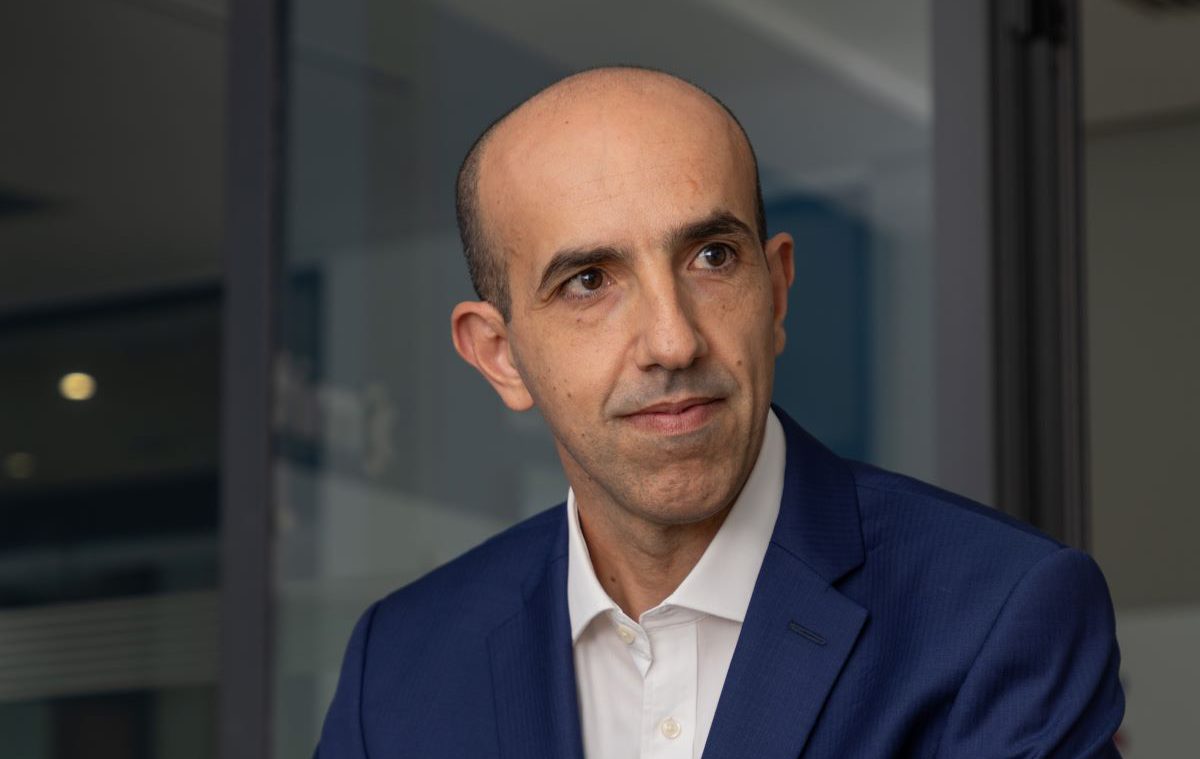MITA is currently in the final stages of two projects that have seen it complete an overhaul in the networks on which the effective functioning of the state and Malta’s healthcare systems depend.
Running throughout 2023, the projects constitute a major upgrade in the nation’s tech infrastructure, and required extensive planning and coordination overseen by MITA network services manager Ramon Mangion.
Mr Mangion previously worked with a payment gateway company in London, servicing large clients like Manchester United and Play.com. Having returned to join MITA as a network engineer in 2009, he eventually transitioned for an enterprise architect role before taking the opportunity to apply for a network engineering manager role in 2017.
Speaking to BusinessNow.mt, Mr Mangion shares his tips for managing the nationwide rollout spanning an entire year, expressing his belief that empowering people to achieve clearly established goals – and trusting their competence to do so – is the best way to approach this scale of project.
“Being surrounded by competent people with years of experience in managing such large scale networks definitely helps,” he says, “but the best advice I can give is to clearly establish objectives and empower and entrust people to take decisions towards the attainment of those objectives.”
He adds that “micromanaging these types of projects will only result in loss of trust and delays in meeting intended objectives – it’s counter productive.” Instead, he prefers to set up short focused catch-up meetings discussing progress and ensuring the team is not steering away from established objectives, while giving direction if required.”
MITA’s Network Engineering Services (NES) team manages the infrastructure that serves as the backbone of the Maltese Government’s digital capabilities. “Our team of 18 network engineers – one of the largest network infrastructure teams in Malta – is responsible for providing connectivity to Government employees across 700 sites,” he says. These include ministries and agencies, local councils and police stations, hospitals and embassies.
Tasked with continuously identifying improvement to the various network segments, the team has spent much of 2023 implementing a major upgrade on the Malta Government Network, known as MAGNET, a private network made up of a collection of fibre and broadband links that are aggregated at MITA’s two data centres.
Explaining the rationale behind the update, Mr Mangion explains that the aggregation equipment so crucial to the smooth functioning of the network was reaching its end of support, while the need was felt for an increase in bandwidth capacity. These needs prompted a deep overhaul of the state’s network infrastructure.
“The NES team planned and designed the new data centre network infrastructure that would be used to aggregate traffic from the 700 remote sites, and then started to migrate these sites onto the new setup,” explains Mr Mangion.
The MAGNET Technology Refresh, as the projected is called, achieved a number of objectives. “Most importantly, it allows our users to have the best possible experience when browsing the internet, streaming audiovisual content, and running business-specific applications, keeping latency to a minimum.”
Implementing the upgrade was no easy feat. “We had to consider our clients’ business needs and plan accordingly,” says Mr Mangion. “Some clients prefer that a network change takes place late at night, while another client’s preference might be the other way round.”
Key to the project’s effective implementation was extensive planning and preparation – or, in Mr Mangion’s words, “testing, testing, and more testing” – that allowed the average time to effect the change to be reduced to just five minutes. Downtime is also restricted through the establishment of a standardised setup template used across the different sites.
“This standardisation is very important,” stresses Mr Mangion. “You cannot have a customised solution for each customer. This also helps when troubleshooting, and when pushing changes through our central management tools. For users, it makes it more easy to roam between different sites, allowing them to connect to the network wherever they are.”
As the frequency and sophistication of cyberattacks has increased, so has the need for cybersecurity, an area that the Tech Refresh also sought to address. All communication with MITA-registered devices is encrypted, and security features have been enabled on parts of the network that are considered untrusted – chief among them, those parts that connect to the wider internet.
“Once you have internet links you are exposed to the entire world,” says Mr Mangion. “So we need to ensure that those devices the internet links with are properly secured. Even if traffic is allowed, the content gets analysed so that a decision can be taken on whether to drop or forward it.”
The Network Engineering Services team works closely with the Security Operations Centre (SOC) to keep abreast of new vulnerabilities and determine whether a patch or upgrade is needed.
“It’s a constant ongoing struggle to keep ahead of security threats,” admits Mr Mangion, who notes, however, that the overhaul of the network is set to make his team members’ lives easier, through a major security upgrade ensuring that only MITA-approved workstations are allowed to connect to the trusted corporate network.
“I can no longer just grab my phone, enter my credentials, and get onto the network,” continues Mr Mangion. “We are now making us of an advanced level of authentication so that when a user connects to the wireless network, a tool determines whether that device has been certified by MITA.”
This process is entirely invisible to the user, reflecting the principle that security should not get in the way of user experience.
“This has reduced our exposure to security attacks quite significantly,” continues Mr Mangion, recalling that the feature became much more important during the COVID-19 pandemic, which saw many more people logging on from their personal devices. “We had around 200 users logging remotely,” he says. “All of a sudden, everyone transitioned to working from home, and at the peak we had around 2,500 users connected remotely” – a headache both for network capacity as well as security considerations.
As the project approaches its final stages, Mr Mangion emphasises the benefit of regular updates: “It is vital to keep up the momentum. We are close, but what remains is the most complex and critical – it is not something that will be carried out over a couple weeks, but months. That is why regular catch up meetings to track status and analyse progress are crucial.”
The other major project the MITA NES team carried out during the year – the Mater Dei Hospital (MDH) Technology Refresh – arose from the need to replace a number the hospital’s network infrastructure to meet today’s needs and anticipated developments in the digital health space.
“There is a lot of innovation in this area and we needed to ensure that the infrastructure in place would be able to support projects planned by the Ministry for Health over the forthcoming years,” says Mr Mangion.
The project significantly increased the bandwidth available across all areas in MDH, improved resiliency of the network, and consolidated the various network segments created over the years in a more simplified environment.
Changes were carried out on a weekly basis since the beginning of the year, with around 220 LAN switches providing the backbone of the MDH campus network now replaced and multiple 10Gbps connections installed across the entire hospital.
The execution of the sensitive project, in an environment where 24/7 service is crucial, necessitated co-ordinated work across various teams, including MITA’s NES, the Ministry for Health’s Chief Information Officer’s office and the MDH engineering teams.
To minimise downtime, a new core network setup was created and run in parallel with the existing setup, which allowed a number of LAN switches to be migrated to the new network on a weekly basis.
“The detailed planning that had to be allocated to the migration of each area meant that one change per week could be carried out,” says Mr Mangion. With 45 areas to be migrated, the project spanned close to an entire year, with all changes carried out late at night until early morning to limit the impact on hospital operations.
Tasks were allocated beforehand and a testing plan was devised for the aftermath of each change. Meanwhile, stakeholders were kept abreast of the progress.
Asked how the operation was pulled off without a hitch, Mr Mangion goes back to his management philosophy: “The planning was very detailed, to the lowest level. After that, it’s about making sure that everyone knows what they need to do, and are given the tools to execute their roles effectively.”
Featured Image:
Joseph Agius Attard
Financial services associations express ‘deep concern’ on situation, condemn attacks on judiciary
The financial services bodies deem attacks on members of the judiciary as ‘unacceptable’
Chris Fearne resigns, requests removal of nomination for EU Commission amid Vitals fraud charges
Prime Minister Robert Abela has requested him to reconsider his decision
Malta Development Association Estate Agents Section elects new council
Alliance CEO Michael Bonello will continue to lead the section






